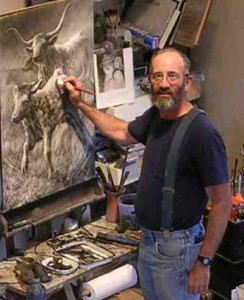Essay by Julianne Couch
Rural Life – November 2007 – Colorado Central Magazine
“My baby’s got the most deplorable taste
but her biggest mistake
is hanging over the fireplace
She’s got ducks, ducks on the wall!”
That song by the Kinks rankles: What’s the matter with ducks on the wall? During my 15 years as a Wyomingite, I’ve learned that ducks make especially nice ornaments, winging toward windows or flapping past fireplaces.
It isn’t just ducks that provide a graceful element of the outdoors inside. In our home, a 28-pound chinook salmon yanked by my husband from Lake Michigan lavishes a 36-inch crescent of iridescent fish-flesh against the stone-walled fireplace. From the stairway of our home’s front entrance, the head of a buck mule deer surveys the quiet street through glass eyes. In our den where I curl up to read with pillow and throw, a whitetail deer’s head looks out a high horizontal window into the backyard. Even in our bedroom, the mounted head of the pronghorn antelope that fed us through one winter gazes down at us.
Our own duck on the wall, a hen mallard, dangles from a hook in the guest room. Various other heads and horns too numerous to catalog rest on shelves, prop up books, or hold down piles of paper.
On a vacation to Wyoming long before moving here from the Midwest, I stopped at a grocery store whose walls were lined with a menagerie of head mounts. I was taken aback by facing dead cousins of what I was about to purchase from the meat counter. It was creepy, and like many people, I was horrified by animal parts hanging from walls. I suppose my beliefs about hunting and decorating have become more pragmatic over time: Why use just the interior part of the animal? Why not decorate with it, too?
Our home has become part art gallery and part natural history museum. I figure that if my husband is going to hunt and bring home meat and fish, the least we can do to pay respect to these creatures is to preserve representatives of them, to admire them, to remember them, to appreciate their beauty and even their superiority to us in so many ways.
But this is mostly a Western tradition. When our Midwestern families come to visit, they try not to make eye contact with our interior decor. Instead, they try to tame our predilections and give us animals exhibited in less shocking ways. For the last several years, they have sent my husband at least one article of clothing embroidered, screened, or embossed with the image of an animal he’s hunted and taken to a taxidermist. In one recent birthday gift box, cradled under crackly tissue-paper, a whitetail deer strutted across the breast of a sweater. For Christmas, the deer was joined by a panoply of fish and game, including biting trout and diving ducks.
For some reason, my husband’s appreciation for animals doesn’t extend to wearing their images on his clothing, so the various representatives of fish and fowl usually wind up at the bottom of his dresser drawer.
I can’t blame people for surmising that someone who likes critters on the wall would also like animal-wear on his clothes. I’m guessing, however, that wearing an animal illustration on his chest feels crassly like advertising: Bud Light; NASCAR; Nike; mule deer; rainbow trout.
But dressing like the outdoors is practical under some circumstances, even if wearing animals like a badge is not. Camouflage clothing disguises a hunter as a combination of rock, branches, mud and sagebrush pulsed once through a food processor. It’s apparently an effective choice for stalking in the woods, and my husband owns a fair supply of such garb.
The catalogs from Orvis and other companies that sell this clothing arrive in our mailbox with the regularity of migrating geese. Their covers echo the designs they sell. Often the company name and catalog date is hidden behind a thicket of briars and brambles and tree trunks in olive green and acorn brown. The other dominant color in this natural collage is bright orange. As a non-hunter, I’m not sure when hunters are supposed to blend in with their surroundings or when they’re supposed to stand out in something so bright they shame the sun. But I’m glad my husband knows the difference: There’s a bare spot above the dresser that could use a nice set of horns.
Julianne Couch is a contributor to Writers on the Range, a service of High Country News. She is a writer in Laramie, Wyoming.

